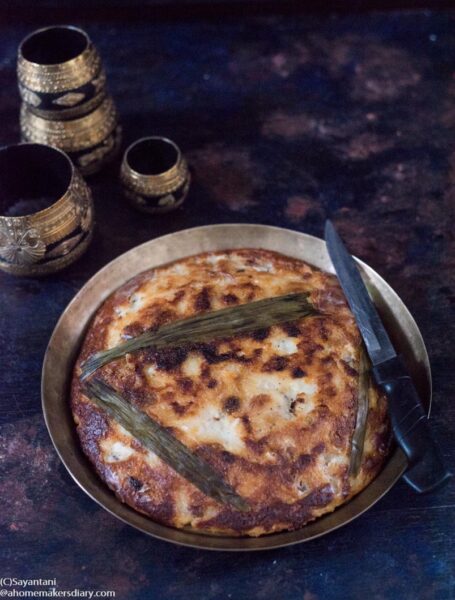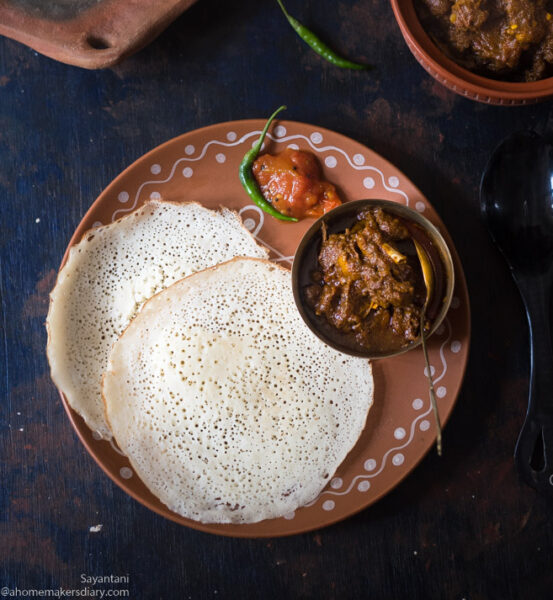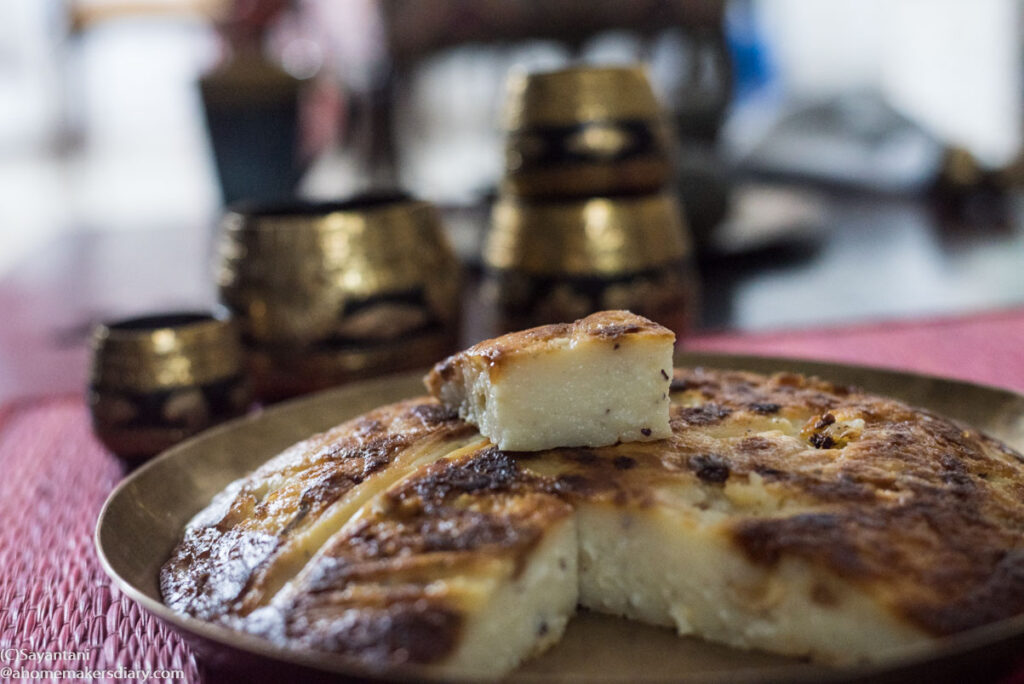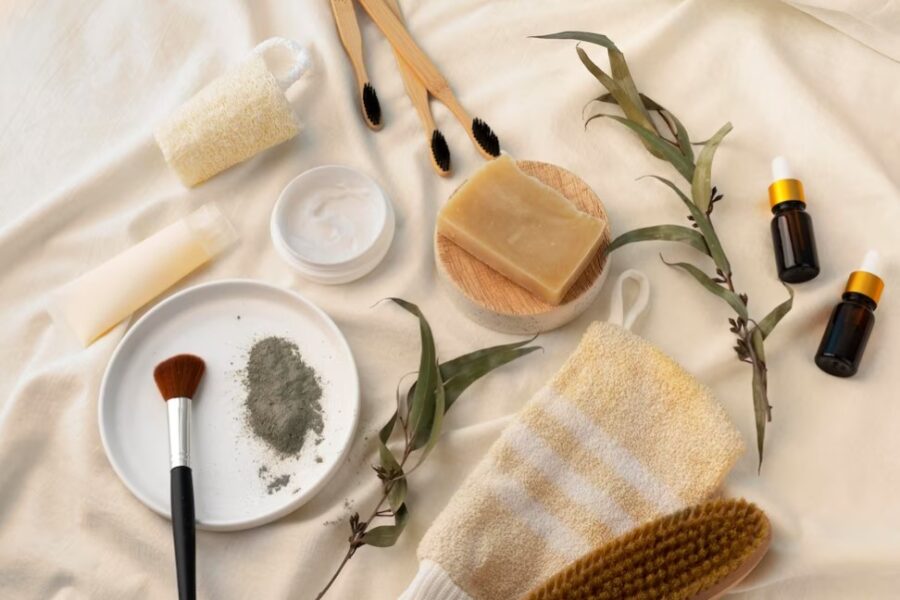

While Bengal is known as the ‘sweetest part of India,’ The Bengali month Poush could aptly be named as the sweetest month of the year for the Bengalis.
Poush in the agrarian economy of Bengal is known as Lokkhir mas, a month dedicated to Goddess Lakshmi, the deity of wealth and happiness. For every Bengali, It’s a month of hope and reassurance that even the poorest of the poor will have some food on their plate. To celebrate the Goddess's arrival, a 3-day festivity is planned known as ‘ auni chauni bauni' puja around Poush Sankranti.
“Auni” is the agaman or arrival of the goddess to the farmer’s house. “Chauni” refers to the Goddess, watching over the farmer. And “Bauni” is Bandhan or bonding: the urge of the farmer to keep the Goddess close to him forever. A symbolic bauni or rope-like structure is made using freshly harvested hay and fastened around the granary, the safe, the almirahs, and all the doors as a symbol of holding good fortune close and keeping it from leaving.
Poush Sankranti
The theologist Bramhabandhab Upadhyay described Sankranti as a day of sharing. He said the hunger we experience is that of the whole universe; for that, we do not consume the new harvest alone. We extend ourselves and share with family, friends, and all living creatures.
The day starts with drawing auspicious motifs around the house--the rice paste becomes food for tiny insects and birds. Choru, a simple rice porridge, is offered to the ancestors. And various pithes or rice cakes are made to be consumed during the day and are shared with all animals like dogs, birds, and foxes who, at some point in time, lived happily around the village setup.
Though with time, we are going further away from such simpler times when amon dhan or “paddy wealth” harvested in winter was the mainstay of our rural economy, yet the old customs have stayed with us as reminders to value the bounty of the earth and the hard work of the farmers.
In the thick of winter when the air gets redolent with the smoky aroma of Nolen Gur we all start to crave goodies made with gur and newly harvested rice. Pithe or Bengali rice based cakes are as old as cultivation of rice. From the oldest recipe of pithe in Jajurveda known as ‘Apupa’ to the newest variations in patisapta-pithe recipes have made a long journey yet never went out of fashion. Depending on the time and region it evolved with local seasonal ingredients. while In the hilly region the stuffing of coconut is replaced with sesame, in the tribal area it is replaced with meat.
With Poush Sankranti just around the corner, let me introduce a couple of unusual pithe recipes that goes beyond the omnipresent ‘puli pithe’ and patisapta .
Kholajali pitha


The name kholajali refers to the words 'khola' or Earthen pan and 'jali' or net. While the first refers to the Earthen cooking pan/tawa the later, to the unique net-like texture. I believe this pitha originated in the Eastern parts of Bengal and is very famous in the Noakhali district of Bangladesh.
One can pair it with either sweet or savoury sides. In our home, it’s a winter ritual to have it with a spicy duck meat curry called Haser mangsher kalia.
Ingredients:
- Rice flour: 1 cup (atop or raw rice)
- Duck egg: 1 or poultry egg one and half
- Pinch of salt
- To season the earthen pot 1 tablespoon of mustard oil mixed with 1 tbsp of water
Method:
- Preparing the batter
- Sieve the flour and place it in a big bowl. Add a pinch of salt.
- Heat 1 cup of water till the water starts to simmer.
- Take off and mix with the flour. Depending on the quality of the flour, the quantity will vary. Start with less water and gradually add more to get the right consistency.
- Mix to get a lump-free batter and keep it pourable yet thick like a slightly thinner pancake batter. Keep it aside for 5-7 minutes till it cools down a bit then add the egg and mix.
- Now adjust the consistency with room temperature water. The thickness should be enough to pour and spread easily by swirling the pan. Please check the associated video.
- Cook the pitha.
- Heat the pan to very hot then keep the heat to medium. Take the oil and water mixture in a small piece of cloth and wipe the surface of the pan. Pour a ladleful and carefully by holding the two sides of the pan swirl it to cover the surface.
- Cover the pan with a lid and cook on medium-high for 30 seconds or till the top changes colour and is cooked. Using a khunti or a spatula take it out.
- Serve hot with some savoury curry of your choice.
Khira Poda Pitha


Ingredients:
- Raw Rice, I used short grain Kamini rice: 1 cup
- Milk: 4 cups
- Sugar: ½ cup
- Water: 1 cup
- Coconut: ½ cup
- Cashews: handful
- Raisins: handful
- Green cardamom-4-5
- Ghee: 2 tbsp
- Salt: ½ tsp
- Banana leaf: 1
Method:
- Wash and soak the rice for at least 4 hours.
- Grind it to a smooth paste. If you are using the mixer use ½ cup water to grind this. Now add ½ more cup water to this paste and mix.
- Scrape or grind the coconut to fine pieces. I sliced a few pieces too for textural difference.
- Take a pressure cooker, a non stick fry pan or another heavy bottom pan. I used my iron kadhai for this. Line it with banana or shal leaf. I did not have much shal leaf so layered some Annapurna/payes pata/ pandan leaf which imparted a nice aroma to the pitha. Grease generously with ghee.
- Take a heavy bottom pan and heat 1 tbsp ghee. Fry the nuts till golden, saute the raisin for some time and keep aside.
- Add the milk to this pan and bring it to a boil. Add the coconut, salt and sugar. Stir till sugar dissolves.
- Keep the flame to low and mix the rice paste slurry once again. Add it to the milk while stirring continuously. Add the nuts. The milk will start to thicken. Be alert to stir it, or lumps will begin to form. Keep cooking for 4-5 minutes or till the whole mixture becomes a soft lump. Switch off.
- Pour the mixture in the lined and greased pan and smoothen the top and grease with ghee. Cover with a tight-fitting lid. Cook this on the lowest flame for min 25 minutes or until the sides start to brown. Carefully turn this on a plate and turn it again in the cooking pan to roast the opposite side again. Do cook the other side for 10-15 minutes and then switch off the flame.
- After 10 minutes take it out of the pan and peel the leaves only when it is cool to touch.
- Cut and serve at room temperature.







